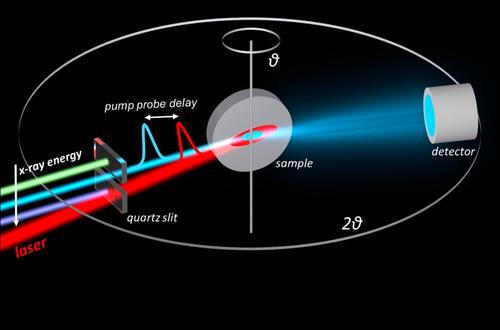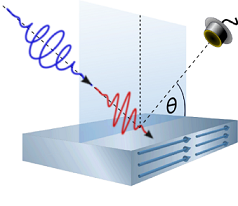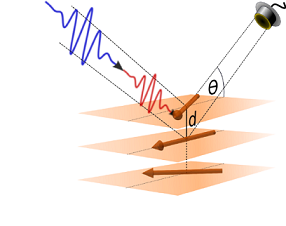Experimental Methods
Ultrafast magnetization dynamics explored with X-ray
Pump-probe at the FemtoSpeX slicing beamline
We perform the X-ray experiments at the synchrotron radiation source BESSY II at the FemtoSpeX slicing beamline. Here two 50-fs laser pulses from coupled Ti:Sa amplifiers are generated, one is used for pumping; the second is lead into the modulator, were the laser pulses co-propagate with the electron bunches from the storage ring. A small part of the electron bunches is modulated, resulting in variation of their kinetic energy. In the next step the electrons pass a bending magnet, where the variation of kinetic energy results a horizontal displacement. In the following undulator the electrons emit elliptically polarized photons, whose angular part generated from the lower kinetic energy electrons exhibits a length of 100 fs. These ultrashort X-ray pulses are kicked into the beamline and are used for probing. In pump-probe experiments we excite the sample with fs-optical-laser pulses, which induces a highly non-equilibrium state in the material. With the X-ray pulses we probe different degrees of freedom, e.g., ferro- or antiferromagnetic order, for varying time distance between pump and probe pulse. The time scales of the magnetic response can be connected to different coupling mechanism between spins and their environment.
X-ray circular magnetic dichroism (XMCD)
Ferromagnetic order can be probed element and state specifically by XMCD, which bases on the effect that the x-ray absorption of a magnetic materials depends on projection of the photon helicity vector onto the magnetization direction.
Time-resolved photoelectron spectroscopy
In time-resolved photoelectron spectroscopy a first laser pulse excites the electronic system, while a second pulse (VUV pulse from higher-order harmonic generation or a free electron laser) probes the transient band structure at variable time delay. Due to the finite escape depth of the photoelectrons the technique is sensitive to the first few surface layers. This allows us to for example follow non equilibrium dynamics in magnetic systems by recording the transient exchange splitting. A second approach to follow spin dynamics is to study the linear or circular magnetic dichroism in angle-resolved photoemission.
2PPE
Two-photon photoemission (2PPE) is a method of experimental physics in which two photons of two different wavelengths are used to release electrons. The subsequent spectroscopy of these photoelectrons allows to examine the unoccupied part of the electronic band structure. We measure a wide variety of samples in three individual vacuum chambers: from thin magnetic layers to the surfaces of semiconductors to topological insulators. We use two titanium-sapphire lasers as a light source, which we additionally amplify and convert into other wavelength ranges.


